Introduction. Psychiatry and Art
The connections between psychiatry and art are manifold. In this brief survey I will present only few aspects of their mutual interactions.
Sigmund Freud developed the cornerstone of analytical psychology and the first psychotherapeutic technique called psychoanalysis. Freud’s interests went beyond the purely therapeutic use of the psychoanalysis. He showed interests in different aspects of human life touching the areas of anthropology, sociology and even art. In his papers related to art, he tried to understand the hidden (unconscious) reason behind the actions of the artist.
Sigmund Freud
In his essay about the sculpture “Moses” by Michelangelo Freud analyzed the intentions of the artist. Using the same method as in the psychoanalysis he was able Moses actions prior to his final “frozen” shape.
The sculpture shows Moses with the ten commands stone tables after he recognized that his people were worshipping the Golden Calf. Freud paid attention to every detail developing a genius interpretation of the psychological status of Moses interconnected with his thoughts and feelings.
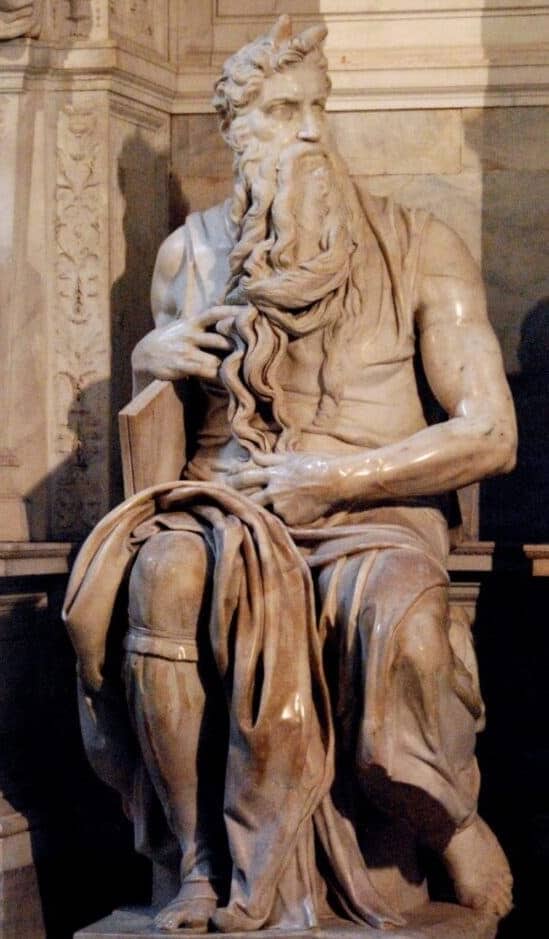
Figure 1
At first the figure of Moses, while it was still sitting quietly, carried the Tables perpendicularly under his right arm. His right hand grasped their lower edge and found a hold in the projection on their front part.
Figure 2
Then came the moment when Moses` calm was broke. He turned his head in the direction of his peaple. Then he saw them warshiping the golden calf. He lifted his foot preparatory to stand up, letting go the Tables with his hand. Then he plunged it to the left and upwards into his beard, as though to turn his violence against his own body. The Tables were now consigned to the pressure of his arm, which had to squeeze them against his side.

Figure 3
But this support was not sufficient, and the Tables began to slip in a forward and downward direction. The upper edge, held horizontally, now began to face forwards and downwards; and the lower edge, deprived of its stay, was nearing the stone seat with its front corner.
Figure 4
What we see before us is not the inception of a violent action but the remains of a movement that has already taken place. In his fury, Moses desired to act, to spring up and take vengeance and forget the Tables; but he has overcome the temptation, and he will now remain seated and still, in his frozen wrath and in his pain mingled with contempt. Nor will he throw away the Tables so that they will break on the stones, for it is on their especial account that he has controlled his anger; it was to preserve them that he kept his passion in check.
In his rage and indignation, he neglected the Tables, and the hand which upheld them withdrew. They began to slide down and were in danger of breaking. This brought him to himself. He remembered his mission and, for its sake, renounced an indulgence of his feelings. His hand returned and saved the unsupported Tables before they had actually fallen to the ground. In this attitude, he remained immobilized, and in this attitude, Michelangelo has portrayed him, echoing the emotional and psychological state often explored in Art and Psychiatry. This moment can be seen as a reflection of therapies for mental health, where controlling one’s emotions is key to stability. Much like in Art Psychiatry Surrealism, where the unconscious mind is expressed, Michelangelo captured the internal conflict. Art Psychiatry Sigmund Freud delved deeply into how such emotional turmoil shapes human expression, making the portrayal of this scene a powerful reflection of the mind’s complex nature.
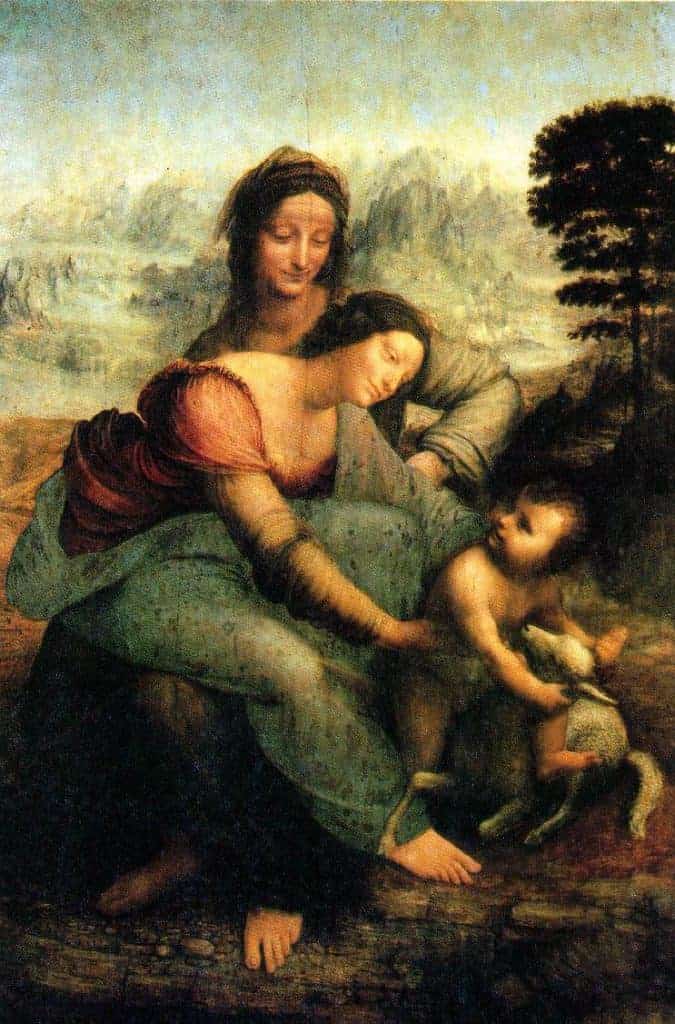
Analyzing the childhood of Leonardo da Vinci
In his other paper Freud analyzed brilliantly the painting “The Virgin and Child with St. Anne” by Leonardo da Vinci. He analyzed the personality of the artist based on the painted details referring to the childhood experiences of the artist.
Carl Gustav Jung
The Swiss psychiatrist and psychoanalyst Carl Gustav Jung, during his personal crisis, developed a psychosis seeing hallucinatory pictures and hearing voices. He recognised those spontaneously appearing images as autonomous products of his psyche. In his autobiography “Memories, Dreams, Reflections” he wrote:
“…Now my task was clear. I had to try to understand what had happened and to what extent my own experience coincided with that of mankind in general. Therefore, my first obligation was to probe the depths of my own psyche. I made a beginning by writing down the fantasies. This work took precedence over everything else. … An incessant stream of fantasies had been released, and I did my best not to lose my head but to find some way to understand these strange things. I stood helpless before an alien world; everything in it seemed difficult and incomprehensible. …
Translating emotions into images
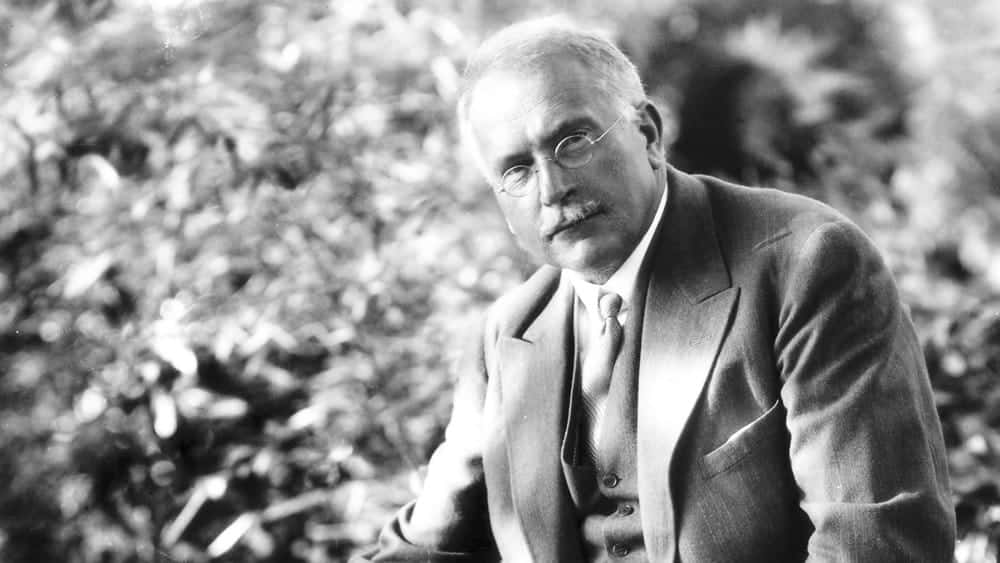
I managed to translate the emotions into images – that is to say, to find the images which were concealed in the emotions – I was inwardly calmed and reassured. Had I left those images hidden in the emotions, I might have been torn to pieces by them. There is a chance that I might have succeeded in splitting them off; hut in that case I would inexorably have fallen into a neurosis and so been ultimately destroyed by them anyhow. As a result of my experiment, I learned how helpful it can be, from the therapeutic point of view, to find the particular images which lie behind emotions.”
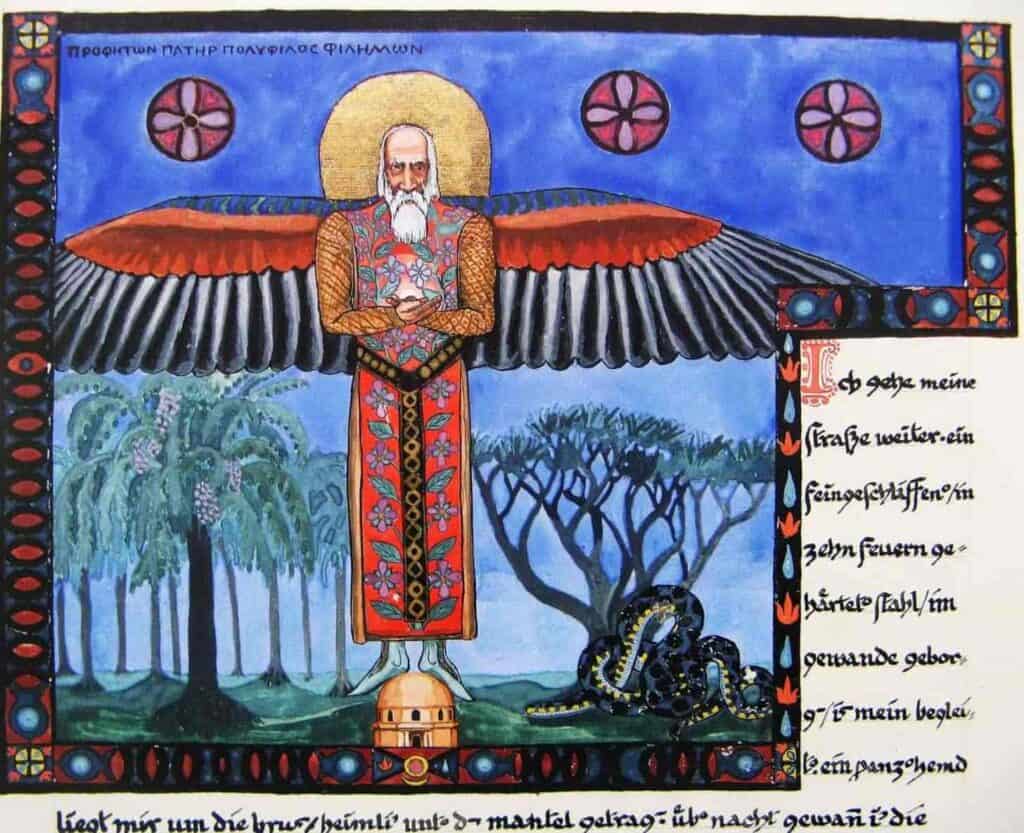
Jung was one of the most brilliant psychiatrist of the last century. He understood his illness as an opportunity to study the phenomena of the psychy. He undertook an experiment on himself being an object of the illness but at the same time his own therapist. This was indeed a heroic task. At the end he succeeded to overcome the psychosis. Afterwards he went through a deep personal change which transformed him to one of the most charismatic personalities and profound thinker of his time.
Jung’s the confrontation with the unconscious
Jung described his experience in following words:
“From the beginning I had conceived my voluntary confrontation with the unconscious as a scientific experiment which I myself was conducting and in whose outcome, I was vitally interested. Today I might equally well say that it was an experiment which was being conducted on me. One of the greatest difficulties for me lay in dealing with my negative feelings. I was voluntarily submitting myself to emotions of which I could not really approve, and I was writing down fantasies which, often struck me as nonsense, and toward which I had strong resistances. For as long as we do not understand their meaning, such fantasies are a diabolical mixture of, the sublime and the ridiculous. It cost me a great deal to undergo them, but I had been challenged by fate. Only by extreme effort was I finally able to escape from the labyrinth. …
Jung’s scientific experiment
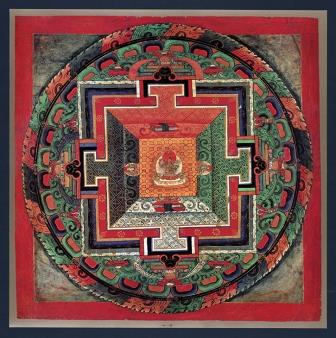
A cogent motive for my making the attempt was the conviction that I could not expect of my patients something I did not dare to do myself. The excuse that a helper stood at their side would not pass muster, for I was well aware that the so-callecl helper – that is, myself – could not help them unless he knew their fantasy material from his own direct experience, and that at present all he possessed were a few theoretical prejudices of dubious value. This idea – that I was committing myself to a dangerous enterprise not for myself alone, but also for the sake of my patients – helped me over several critical phases”.
The Red Book
Jung wrote down the phantasies and painted his hallucinations in a book called: “The Red Book”. In “The Red Book” Jung was weaving his own myth, mining his own experiences and imaginations. The book is an example of a fascinating interaction between art and science.
Jung and the art therapy
Carl Gustav Jung was the first psychiatrist who recognized the importance of artistic activities in the therapeutic process helping patients overcome their illnesses. He implemented painting and other artistic activities into psychiatry. The art therapy became today a well establish therapeutic procedure and an indispensable component of psychiatric treatment.

Surrealism
The interaction between psychiatry, psychology and art works in both directions. The influence psychoanalysis exerted on modern art, especially surrealism, was acknowledged by Andre Breton and Salvador Dali. The latter visited Freud in Vienna to pay him tribute for his work. Freud’s impression after this encounter was: “I have been inclined to regard the Surrealists as complete fools, but that young Spaniard Salvador Dali with his candid, fanatical eyes and his undeniable technical mastery has changed my estimate”. (S. Freud, “The Future of an Illusion”).
Dali characterised himself: “The only difference between me and a madman is that I am not at all mad.” In his book “La conquête de l`irrationnel” (The Conquest of the Irrational), he described his “paranoiac-critical method” as a “spontaneous method of irrational knowledge based on the interpretative-critical association of delirious phenomena. ”The artistic work is an irrational expression of feelings and inner needs of the person creating it. The artistic process exercises a protective effect on the artist compensating his inner conflicts. Salvatore Dali used to say, “I would have become mad if I wouldn`t be an artist.”
Hans Prinzhorn
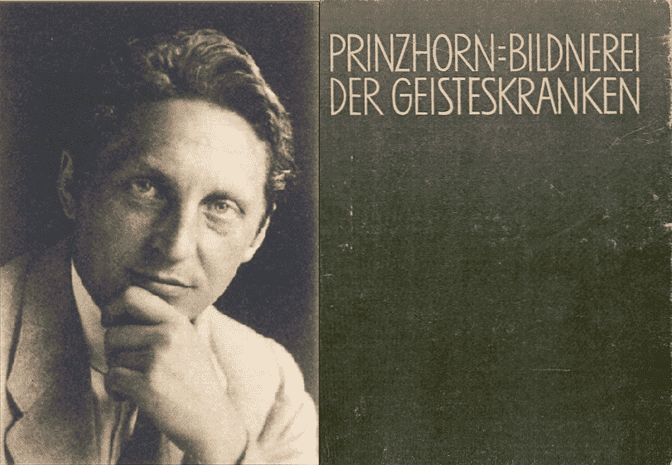
The German psychiatrist Hans Prinzhorn collected 4500 paintings and other artistic objects from mentally ill patients from psychiatric hospitals across Germany in the years 1919-1921. In 1922 he published a book “Die Bildnerei der Geisteskranken” (”Artistry of the mentally ill”). Today the objectcs collected by Prinzhorn are exposed to public in Heidelberg germany in the “Prinzhorn Galery”.
Prinzhorn and the surrealists
In the year 1929, Prinzhorn exhibited the works of his collection in the gallery “Max Bine” in Paris. The exhibition was visited by all important surrealists; some of whom purchased artistic objects created by the mentally ill patients. This book and the mentioned exhibition in Paris became the point of reference for young artists surrounding the co-founder of the surrealism movement, Andre Breton.
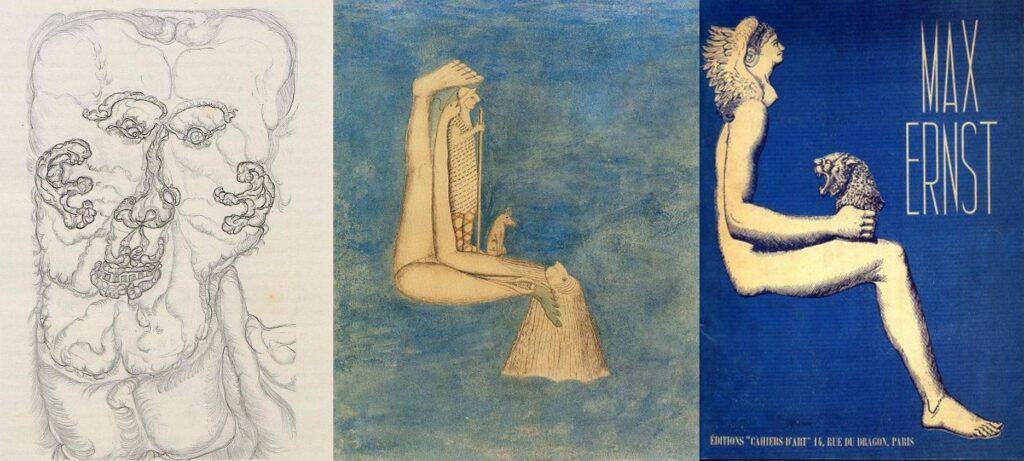
Surrealism
Surrealism shouldn`t be seen as a copy of the art of the mentally ill. All artistic activities are related to a deeper source of the human psyche called “unconscious.” The unconscious is the “invisible” part of our psychic activities. It contains all the processes taking place underneath the level of our awareness. The thinking processes in mentally ill patients, especially those suffering from schizophrenia, arise to a great extent from this unconscious source. That source is also present in “healthy people.” Under normal circumstances we have access to the unconscious layer of the psyche only in our dreams. The “dream architecture” is “surrealistic” neglecting the continuity in time and space, as well as spatial proportions.

Art and civilisation
The human spirit, our consciousness, the knowledge that “I am” and “who I am” aroused from the depth of the unconscious. The emergence of civilization is a developmental process of consciousness. The history of art is at the same time the history of mankind. Art reflects the balancing act between the conscious and unconscious streams.
The people from primitive societies or our ancestors from the Paleolithic era couldn’t be called artists. They created objects or painted because of the human longing for creative expression. The main effort of those artists was to create a precise image of the surrounding world. This effort reached the level of perfection in the antic Greece and later during the renaissance in Europe.
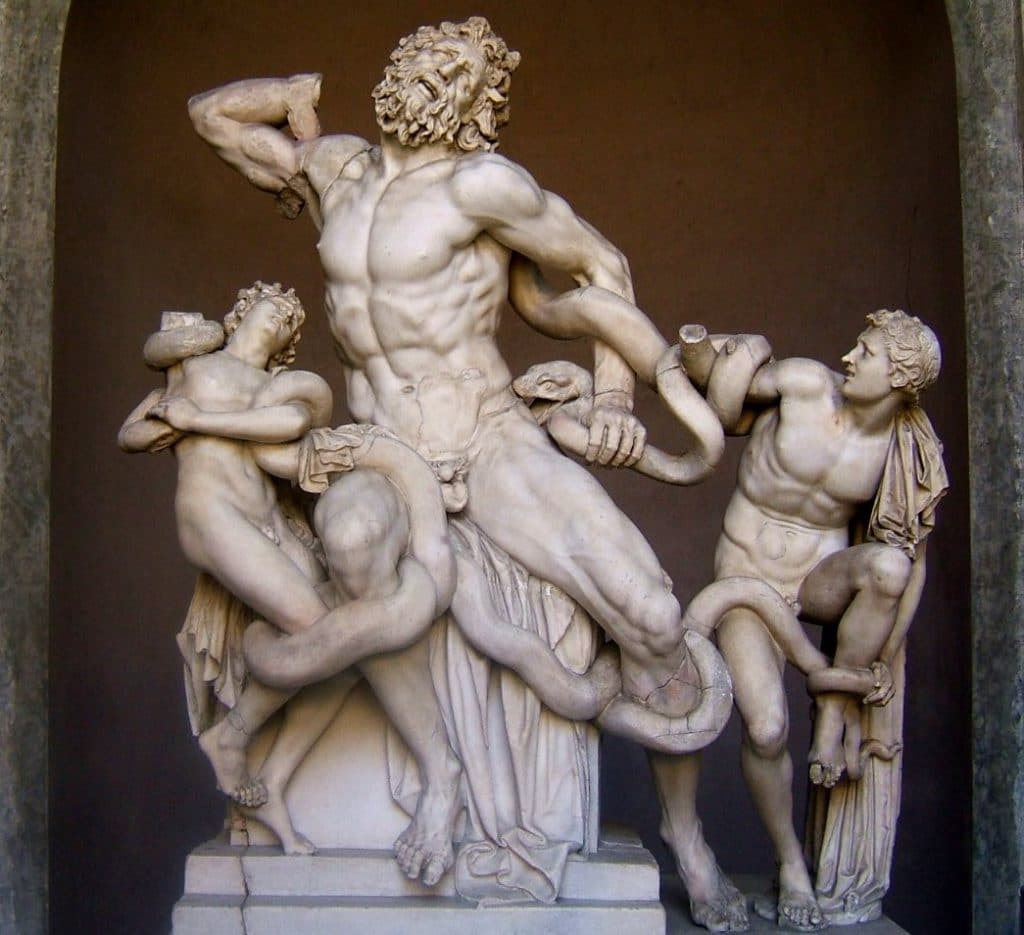
Archaic roots of modern art
The growing level of consciousness and the technological revolution pressed our life into “operational schedules”. The effect of technocratic changes was the disconnection from nature and our instincts. This situation created a psychological need to balance this one sidedness by going back to our roots. This is not a coincidence that modern art often uses archaic forms of expression. Surrealism abandoned the continuity in time and space creating “distorted” images. The other modern art movements, like cubism and dada, further destroyed form reducing it to the simplified geometrical figures and fragments of context.
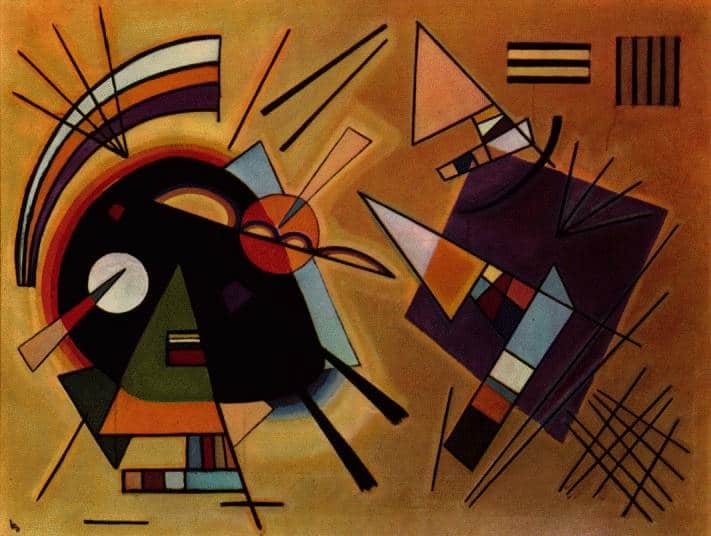
Modern art is going back to the archaic roots of our ancestry, using simplified forms and distorting the real word. This way it creates an emotional counterweight to our extremely rational and technologically possessed, conscious perception.


